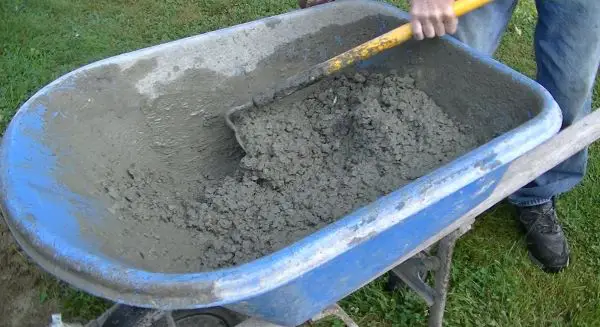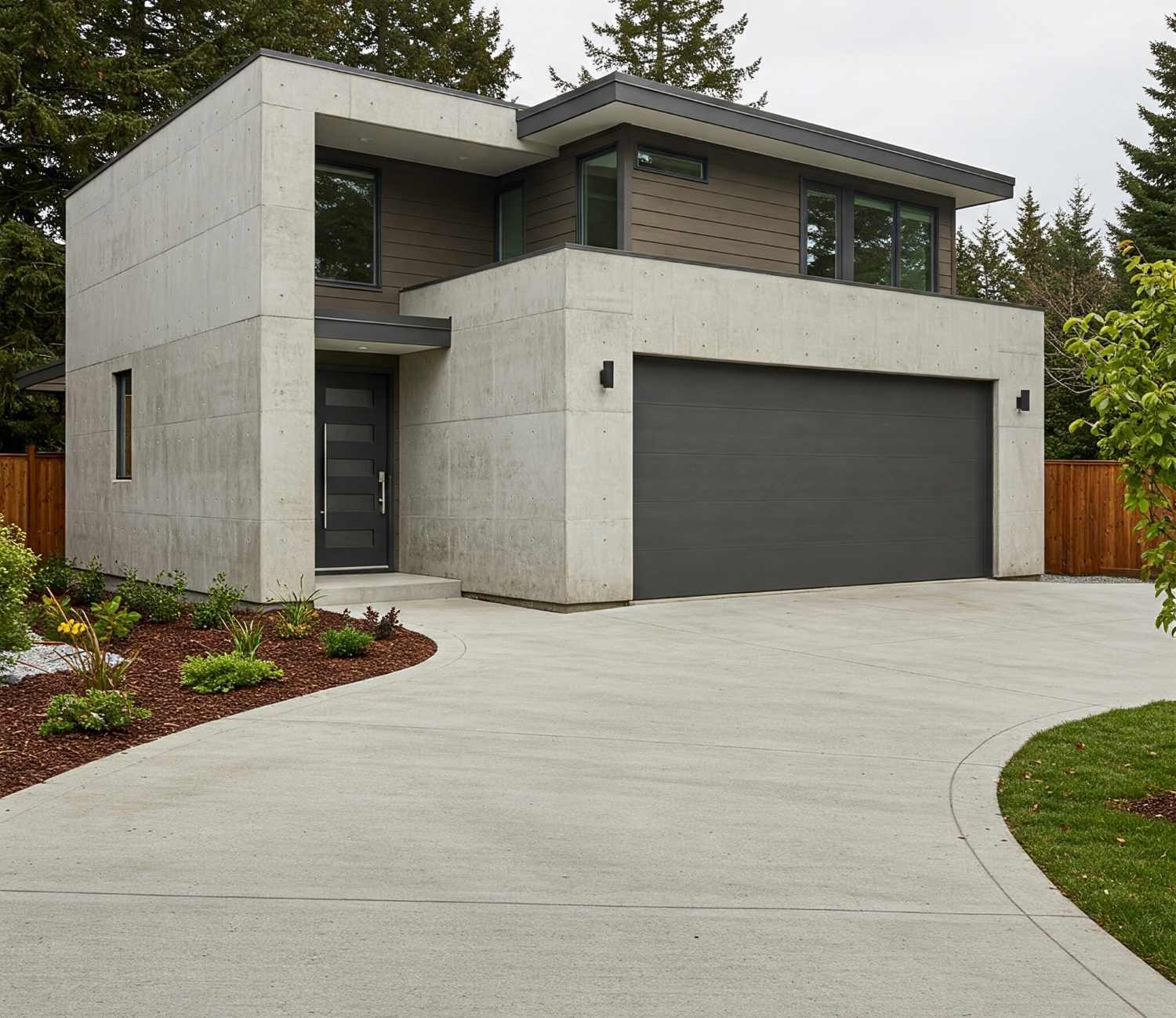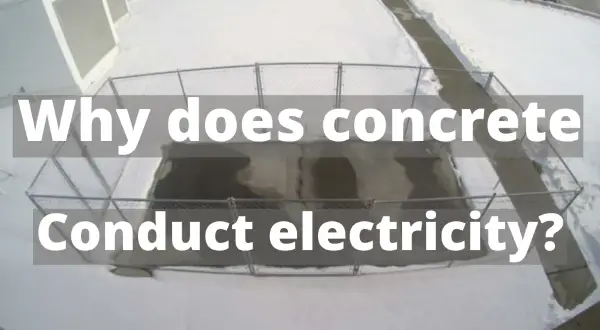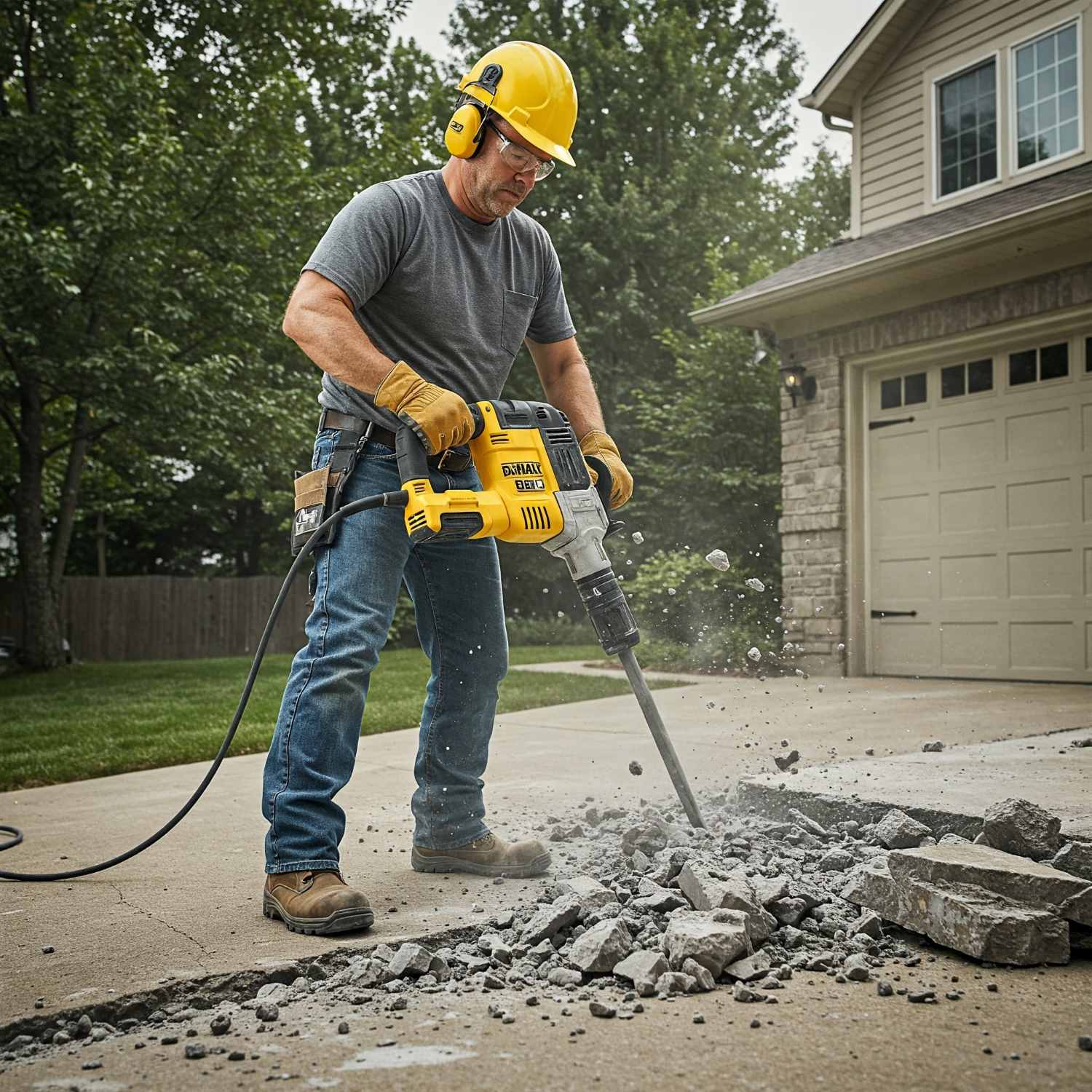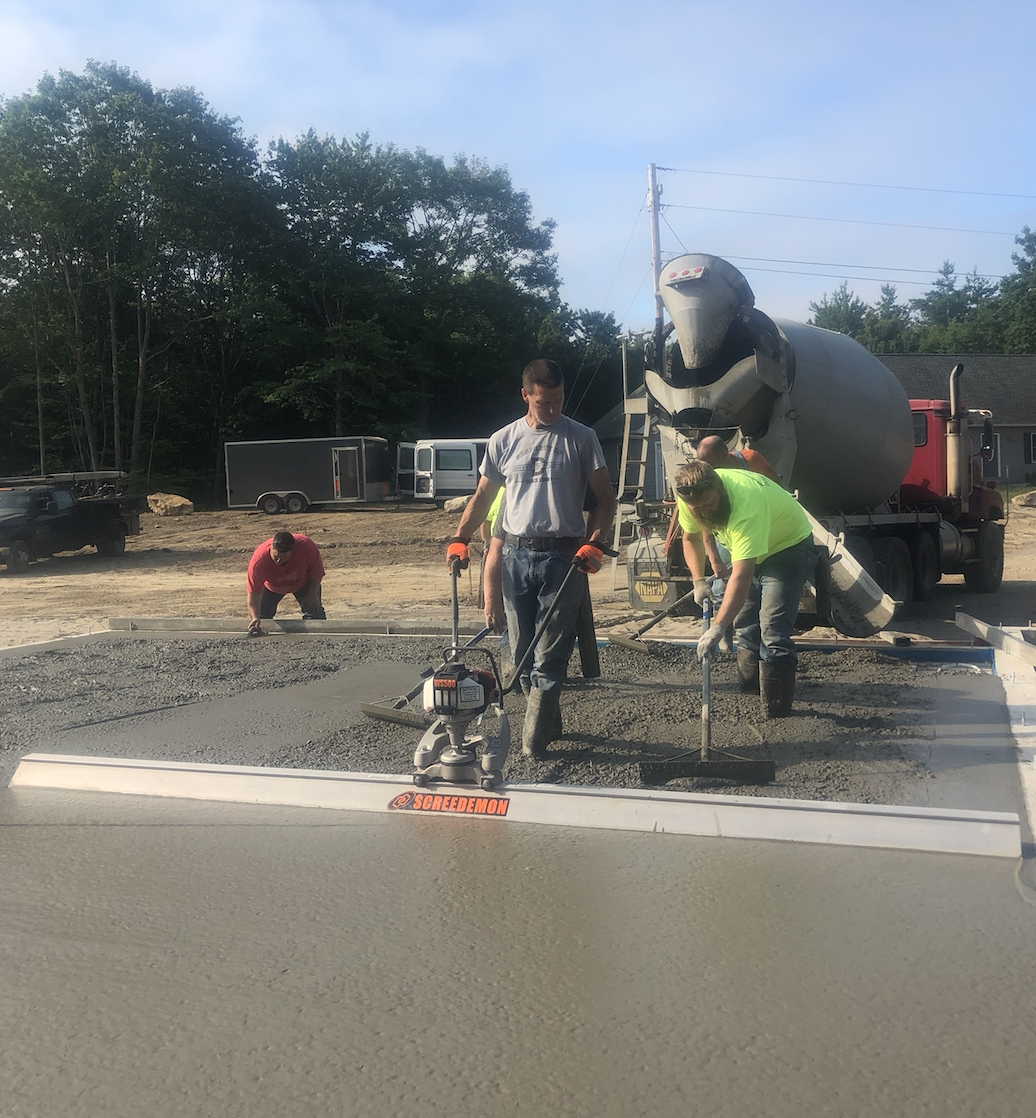how to cover concrete walls
in a basement
Updated November 14, 2023
Author: Michael Day

You want to finish off your basement but you can't decide how to cover the concrete walls.
Most concrete walls or block walls in a basement are covered using drywall, BUT there are a lot of other very good options like tile, veneer, paneling, faux brick, paint and a few more.
I'll show you how to finish off your basement walls with 10 really cool examples below.
do this before finishing your basement walls
Regardless of how you cover your concrete walls, you're going to want to check for moisture and seal the concrete.
Moisture coming through the concrete or blocks could cause mold or damage whatever type of covering you choose.
You'll also want to repair any cracks in the concrete foundation to make sure water doesn't leak into your newly finished basement.
See how to waterproof a basement here.
Learn how to fix cracks in foundation walls here.
you may have to install framing to cover your basement walls
In most basements, installing framing inside the concrete walls is the best way to "finish off" the basement.
The framing allows for insulation, attaching drywall, wood, paneling and other finishes.
It also lets you build different rooms, closets, and storage space.
Without framing, all the electrical will have to be run overhead so no wall outlets unless you use conduit.
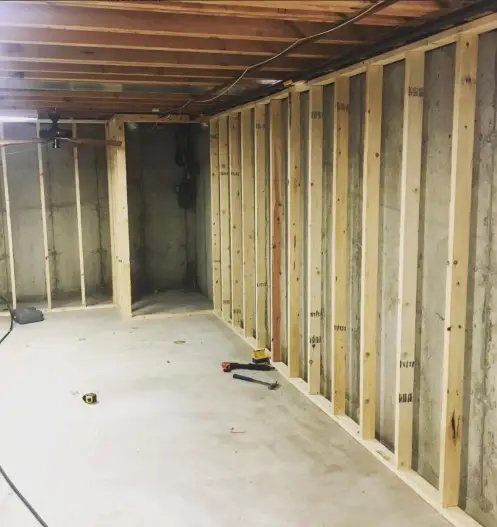
1. using drywall and paint to cover concrete walls
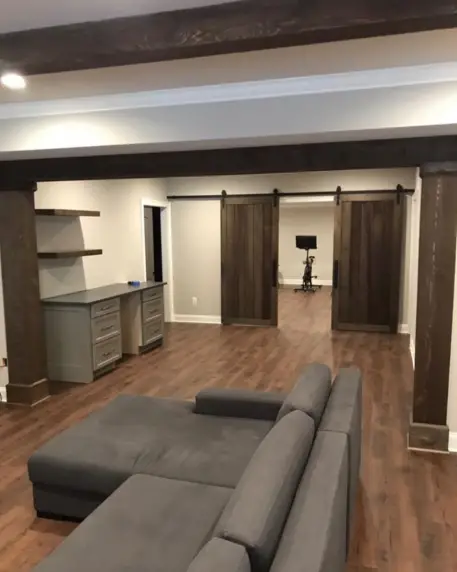
Finishing your basement walls with drywall and then painting them gives you a lot of color and design options.
After the framing and electrical is done, drywall is hung, taped, plastered, and sanded. Now you're ready to paint!
Installing framing and drywall may or may not be a DIY project. It's a lot of work and kind of depends on how handy you are.
2. painting the concrete or block wall
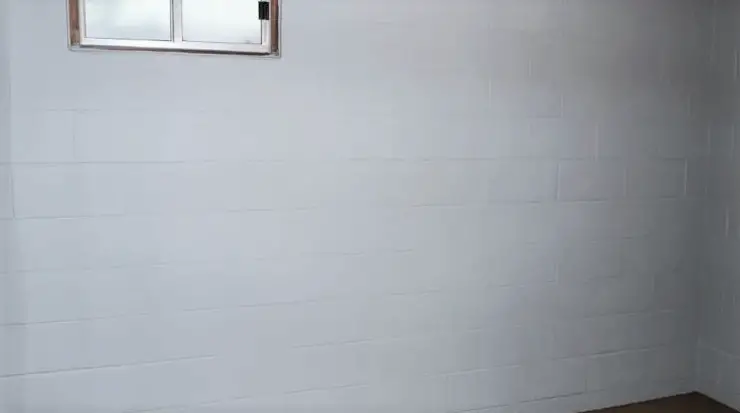
Painting the concrete or cinder blocks is the easiest and least expensive method for covering the walls.
It's not fancy but it does clean up the walls a lot. This is a lot more diy friendly and takes a lot less time than any of the other methods.
Here's a few concrete wall paint products you can use:
1. TuffCrete Concrete Stain Paint
2. Kilz Basement and Masonry Waterproofing Paint
3. Kilz Masonry, Stucco, and Brick paint
3. Brick veneer panels for basement walls
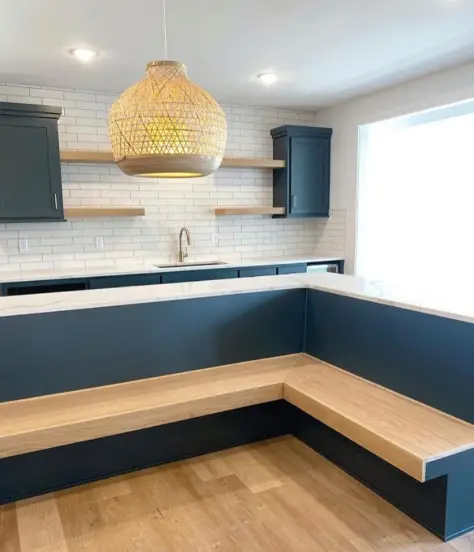
Try using these self-adhesive brick veneer wall tiles for finishing your basement walls.
You peel and stick them to the walls. They can be trimmed to fit around objects if needed.
These come in packs of 10 and cover about 60 sq. ft. per pack.
4. cover your walls with real barnboards
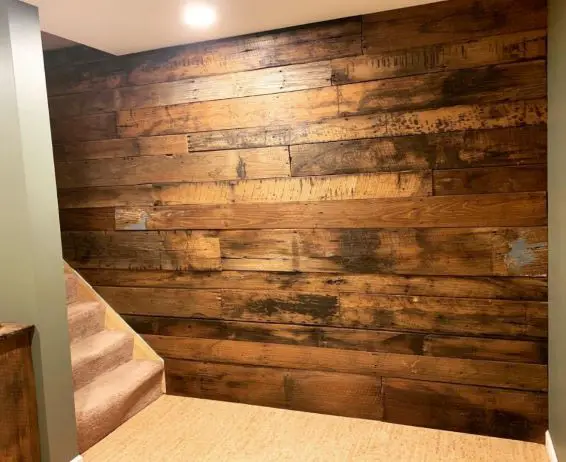
These REAL barn boards were removed from an old barn that was falling down.
The boards were sanded and stained to give them this rustic look.
The basement walls were framed in, like with using drywall, then the boards were nailed to the 2x4's.
This is an awesome way to cover any type of basement wall!
5. combination weathered wood and painted drywall
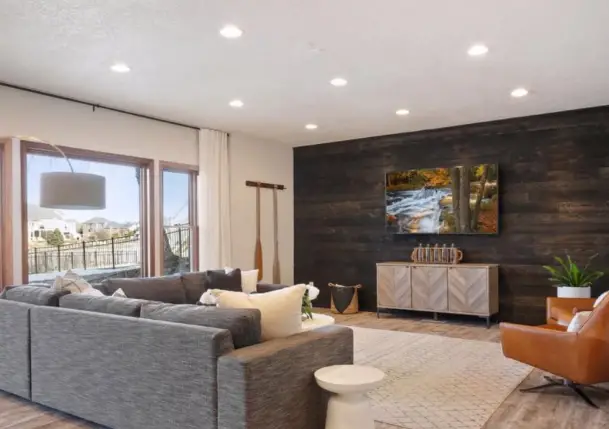
This basement was framed and insulated. Then drywall was used for most of the walls.
An accent wall of weathered wood was used make the room feel warm and break up some of the bright white painted look.
You can use pine boards for this kind of look. Stain them and seal with polyurethane before you put them up.
6. use wallpaper to finish your basement walls
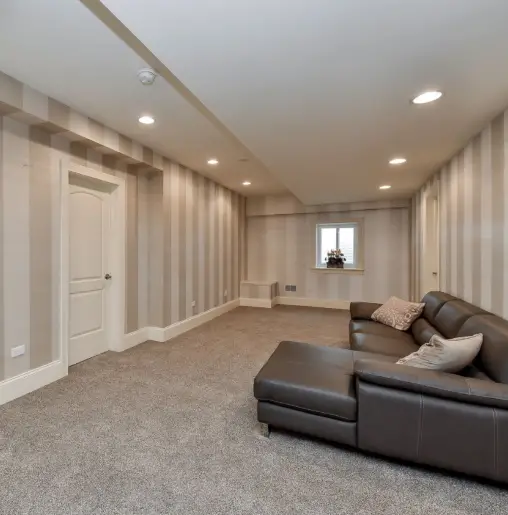
Using wallpaper to finish your basement walls is pretty easy. You'll have to have the basement framed in and drywalled first.
Wallpaper may be something you hire someone else to do unless you're a handyperson. The good thing about wallpaper is the unlimited designs and colors to choose from.
Most wallpapers are peel and stick that you can cut and install yourself.
7. ceramic tile for finishing your basement walls
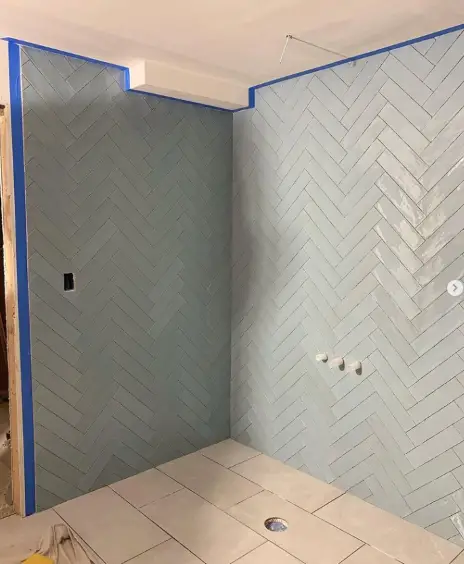
One great way to cover up your concrete walls is with ceramic tiles.
Tile comes in all shapes, sizes, and colors. They're great for bathrooms and kitchens.
These shower walls and the floor was covered using tiles in this basement remodel project.
8. use 3D wall panels to finish concrete walls in a basement
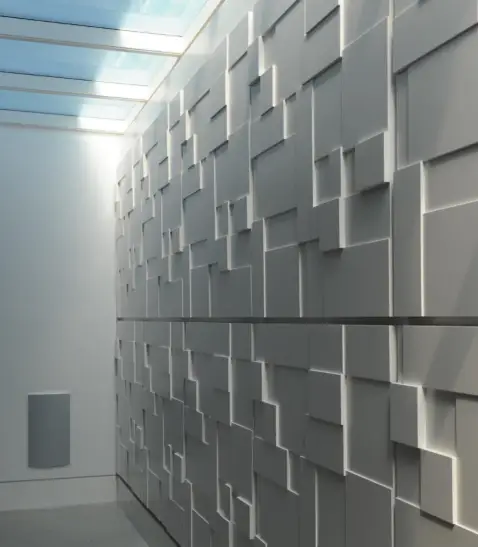
These 3D wall panels are lightweight and fire resistant. They come in many different shapes and colors.
They're installed using a heavy duty construction adhesive and can be cut to fit any size wall.
You can purchase them in a pack of 12 that will cover 32 sq. ft. per pack.
9. cover your walls with wood paneling and cabinets
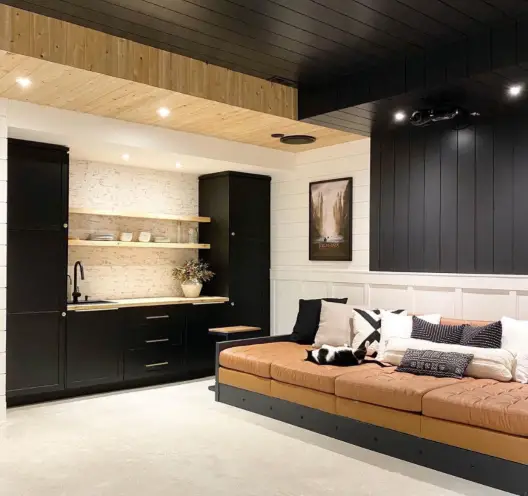
Using a combination of wood paneling, shiplap paneling and wood cabinets is another way to cover your basement walls.
Finishing your basement this way gives you multiple design options. The dark and light colors give this room a great contrast.
10. install a full size wall mural to cover your walls
These peel and stick wall murals come in all sorts of designs to choose from.
The sizes range from 5' x 8' to 8' x 12' and can be cut to fit most any size wall.
They're pre-cut in smaller pieces to make installation easy. Peel and stick to your wall, they're also easy to remove and replace if you want a different look.
11. what's the cheapest way to cover concrete walls? (bonus)
Most likely the cheapest way to cover your concrete walls is by using a parging mix.
Parging mix is a pre-blended, ready to use, cement mixture that bonds right to concrete walls and cement blocks.
It can be troweled on smooth or faux finished. A parge mix will also cover up defects, holes and gouges in your concrete walls.
If you like, afterwards, it can be painted to achieve any color you desire.
Sakrete has a parging mix you can purchase at most hardware stores.
12. consider a "complete" basement finishing system (walls and ceiling) double bonus!
You may want to consider installing a complete basement wall and ceiling finishing system like the one from Owens Corning.
The wall panels are removable to allow for electrical and plumbing access, and they're also mold and mildew resistant.
This is a much better option for damp basements. The wall panels can even be painted!
IN CONCLUSION:
You really have a lot of options to consider for covering up your basement walls.
The 10 (really 12) ways I've mentioned above are all good, some easier to do than others.
Some are more permanent than others, so keep that in mind when you choose.
Good luck!










